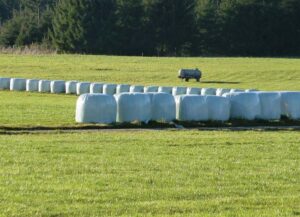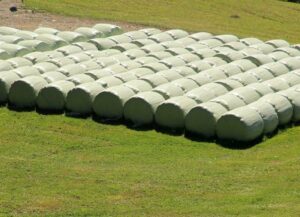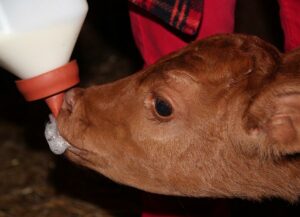Joaquín Ventura & Fernando Diaz
According to data from the US National Oceanic and Atmospheric Administration, January 2020 was the hottest month on record worldwide in the 141 years climate has been monitored. The surface temperature both for land and ocean was 1.14 ºC above the average for all Januaries during the 20th century, well above the previous record of January 2016. Furthermore, this was the 44th consecutive January during the previous century with temperatures above average. Climate change is a fact and we need to adapt as soon as possible, so that livestock production suffers as little as possible as a result.
One of the consequences of a higher mean air temperature is that the maturity of the plants in the pastures is accelerated, which impacts its nutritional value. It is necessary to adjust the time when the grass is harvested for hay production if we want to continue to have feed with optimum quality for livestock.
A study carried out over 32 years on 48 plots of pastures in the Cantal region (southern half of France, between 900 and 1,200 m altitude) monitored the nutritional value of its hay production. The objective was to evaluate the variation in hay quality, on the one hand, and determine whether feeding value can be predicted better by combining agroclimatic variables with chemical composition.
In vivo digestibility and ingestion of hay dry matter harvested were measured using sheep during the first annual cut in permanent grasslands. During the 32 years in which data were collected, the average air temperature between February and August increased by 1.34 ºC. This is the period corresponding to emergency and increased vegetative growth of pasture for that region. The first cut was advanced six days to compensate for the accelerated maturity as a result of this increase in temperature. It was estimated that the thermal sum at the time of the first cut had increased by 13% during the study period.
Climate change has an influence on the digestibility of hay
The crude protein content and digestibility of hay organic matter harvested during the experimental period decreased (22% and 3%, respectively), while the proportion of crude fiber and dry matter intake increased (8% and 9%). Changes in the chemical composition and digestibility of organic matter were consistent with the increase in the thermal sum.
Agroclimatic values were found to have an influence on the digestibility of hay: when an attempt was made to predict the digestibility of hay organic matter only from its chemical composition (crude protein and fiber), only 56.9% of its variability was explained; on the other hand, when the thermal sum was added to the calculation and the days after reaching the optimum maturation, 60.2% of the variability was explained.
The authors of this long-term study observed that climate change has had a significant effect on grass maturation, which was reached earlier at the end than at the beginning of the study period. In the plots studied it is not enough to advance six days the time of first cutting, but to maintain the same hay quality at the end as at the beginning of the data collection period (counting on the increase of the thermal sum and observing the state of maturation of the plants) it would be necessary to advance the first cut about 19 days.
In conclusion, the study points to the indirect negative effect of climate change on the quality of meadow hay if accelerated plant maturation is not compensated with a significant advance in the date of first cutting. On the other hand, according to the results obtained, taking into account agroclimatic criteria helps monitor and predict the hay quality in relation to intra- and year-on-year climate variations.
Reference
Bertrand Deroche, Philippe Pradel, René Baumont. 2020. Long-term evolution and prediction of feed value for permanent mountain grassland hay: Analysis of a 32-year data set in relation to climate change. Grass Forage Sci. 75:18–27.
© 2021 Dellait Dairy Knowledge Center. All Rights Reserved.









